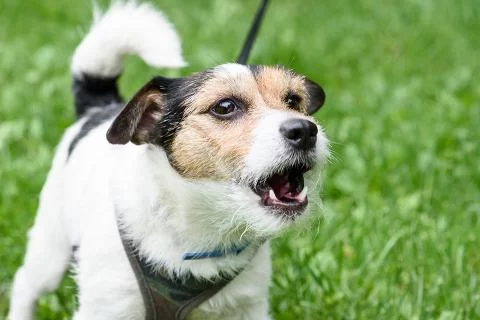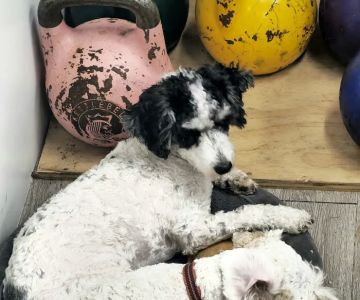How to Help a Shy Dog Become More Confident: Practical Tips for Pet Owners
When I first adopted my dog Luna, I noticed right away that she was extremely shy. She would cower at loud noises, shy away from new people, and would sometimes hide in her crate when things got too overwhelming. Luna wasn’t aggressive or unfriendly, but she seemed very anxious and fearful. After spending some time with her, I realized that she just lacked confidence, and I knew I had to help her become more comfortable and secure in her surroundings. In this article, I’ll share the techniques that worked for Luna and helped her grow into a more confident dog. If you have a shy dog, these tips might be just what you need to help them build the courage they need to thrive.
1. Understanding the Root Causes of Shyness
The first step in helping Luna become more confident was understanding why she was so shy. Shyness in dogs can stem from many factors, including a lack of early socialization, past trauma, or simply a more naturally reserved personality. For Luna, I learned that her shyness was rooted in a lack of positive experiences with people and new environments during her early life. She had likely spent her first few months in a shelter and had limited exposure to the world outside.
Understanding the root cause of your dog’s shyness is crucial. If your dog is fearful due to a traumatic experience, it may take more time and patience to help them feel safe. If the shyness is due to lack of socialization, you may need to slowly introduce them to new experiences. Identifying the cause allows you to tailor your approach to suit your dog’s specific needs.

VCA Arboretum View Animal Hospital, 2551 Warrenville Rd, Downers Grove, IL 60515, USA
See Details2. Take It Slow: Gradual Exposure to New Experiences
One of the most important steps I took was to gradually expose Luna to new experiences. I didn’t want to overwhelm her, so we started with small steps. We would go on walks around familiar areas, allowing her to observe the world at her own pace. At first, we avoided crowded areas and loud noises, instead opting for quiet, calm spaces where Luna felt safer.
As Luna became more comfortable, I slowly introduced her to new experiences. We started meeting new people, visiting dog-friendly parks, and even meeting other dogs. The key to gradual exposure is never pushing your dog too hard. Always gauge their comfort level and give them breaks if they seem overwhelmed. It’s important to let your dog progress at their own pace without forcing them into situations they’re not ready for.
3. Positive Reinforcement: Rewarding Courageous Behavior
Positive reinforcement was essential in helping Luna build confidence. Every time she faced a new experience or interaction, I made sure to reward her with treats, praise, or playtime. Whenever Luna approached a new person without hiding, or when she remained calm during a noisy event, I praised her and gave her a treat. This helped Luna associate bravery with positive outcomes, motivating her to repeat those behaviors.
Positive reinforcement works because it helps dogs make the connection between their actions and a desirable outcome. Over time, Luna began to understand that being brave and engaging with the world around her led to rewards, making her more likely to repeat those confident behaviors. The more you praise and reward your dog for positive behavior, the more they will start to feel confident and secure in their actions.
4. Create a Safe, Predictable Environment
For Luna, having a consistent and safe routine was key to helping her feel secure. I made sure to establish a predictable schedule for feeding, walks, playtime, and rest. Knowing what to expect and when to expect it gave Luna a sense of stability and helped reduce her anxiety. Dogs thrive on routine, and creating a structured environment can help them feel more confident.
In addition to a routine, I made sure to create a quiet, cozy space where Luna could retreat when she needed time alone. Having a designated “safe space” where she could relax without the stress of new stimuli helped her feel secure. Luna eventually learned that there was a place she could go to feel calm, which made her feel more in control of her environment.
5. Socialize Your Dog Gradually
One of the biggest challenges for Luna was socializing with other dogs and people. I knew that in order for her to build confidence, she needed to interact with a variety of people, other dogs, and different environments. However, I also understood that throwing her into a busy dog park or a crowded gathering right away would likely overwhelm her. So, I took a gradual approach.
We started by meeting calm, friendly dogs one-on-one in a controlled environment. I made sure to supervise the interactions closely and provided plenty of positive reinforcement when Luna remained calm. Over time, Luna became more comfortable around other dogs and people, and I could see her confidence growing. If your dog is shy or fearful of other dogs or people, gradual socialization is essential. It’s important to move at their pace and celebrate small victories along the way.
6. Teach Basic Commands to Build Confidence
Training Luna in basic obedience commands was another effective way to help her build confidence. I started with simple commands like “sit,” “stay,” and “come.” Knowing that she could successfully follow commands gave Luna a sense of accomplishment and control. It also helped improve our communication and reinforced the bond between us.
As Luna became more confident in following commands, I noticed that her overall confidence grew. She started to trust that I would guide her and that she could rely on me for direction. For shy dogs, teaching basic commands provides them with structure and helps them feel secure in their ability to follow through. It also encourages them to pay attention to you and engage with the world around them in a positive way.
7. Patience is Key
Above all, patience was the most important factor in helping Luna gain confidence. There were days when she made great progress, and other days when she was too fearful to engage. I learned not to get frustrated and to keep the training sessions short and positive. It’s important to remember that building confidence in a shy dog takes time. Progress may be slow, but every small step forward is a victory.
Shy dogs need time to trust, and pushing them too hard can backfire. Allow your dog to take breaks and never force them into a situation they aren’t ready for. With consistency, patience, and plenty of love, shy dogs can transform into confident, happy companions. Luna’s progress was a testament to the power of positive reinforcement and gradual exposure.











